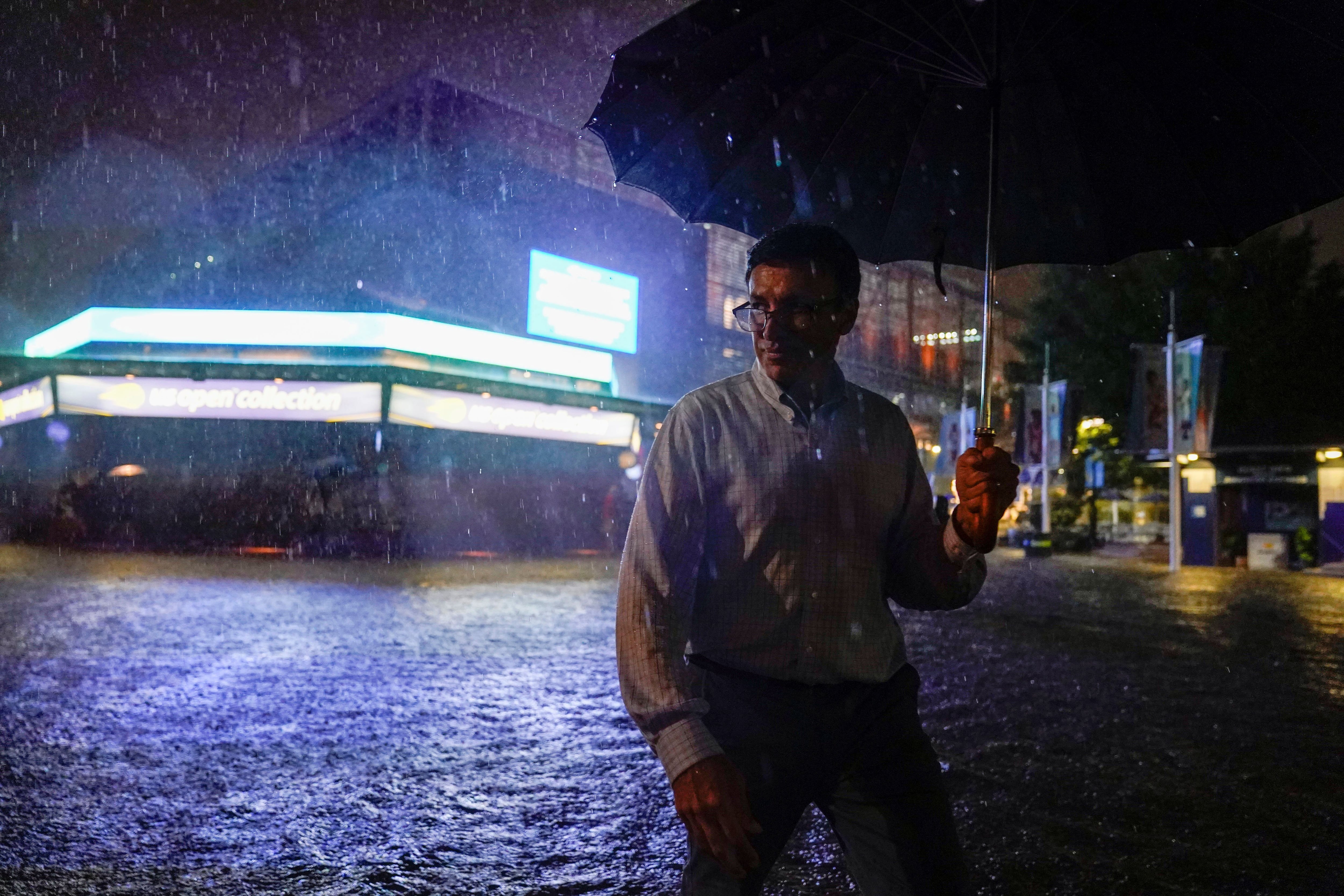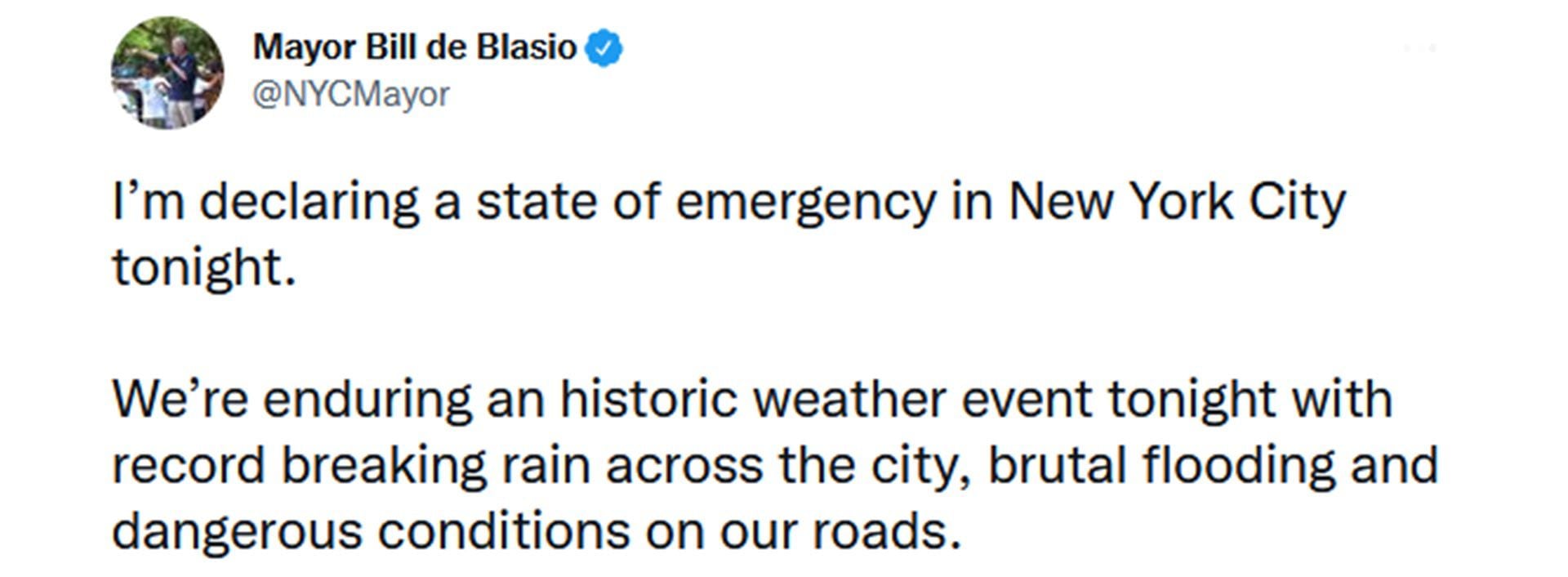At least nine people died as a result of the strong storms that hit in the last hours Northeastern United States, according to police sources.
In New York City, which is in an emergency situation, there have been seven of the deceased, according to the New York police, while in the nearby state of New Jersey, one more, according to the mayor of the city of Passaic, Héctor Lora.
Another victim registered in Upper Dublin, Pennsylvania, said the mayor of the town.
The storms are part of the remnants of Hurricane Ida that, already degraded to a storm, struck the southern state of Louisiana over the weekend, causing severe flooding and tornadoes while leaving a trail of destruction to the north.
The victims in New York, whose names were not disclosed, were located in four different areas of the city and were between the ages of 2 and 66, according to the New York Police Department. Official causes of death will be determined later by the city’s medical examiner, the department said.

A spectator walks through the flooded pavilion in front of the Louis Armstrong Stadium on the third day of the 2021 US Open tennis tournament.
New York declared a state of emergency in the early hours of Thursday after the northeast region of the country registered heavy rains and winds from the remains of Ida, which caused major floods. The Governor of New Jersey, Phil Murphy, also declared a state of emergency in the neighboring state.
“We are experiencing a historic meteorological event with record-breaking rains throughout the city, with brutal flooding and dangerous road conditions,” warned the mayor of New York, Bill de Blasio, on social media.

Bill de Blasio’s tweet
Both De Blasio and the Governor of New York State, Kathy Hochul, pointed out that in a few hours much more rain fell than expected, which has left the region in a “Lousy situation”.
Hundreds of flights were canceled at nearby airports LaGuardia and JFK, as well as in Newark, where a video showed a flooded terminal.

The Newark airport was also affected
The floods have closed major highways in several boroughs, including Manhattan, The Bronx, and Queens.
The streets turned into rivers, while the city’s metro stations were also flooded, and the Metropolitan Transportation Authority reported that the services were effectively closed.
Like the images showing submerged cars on city streets, authorities urged residents not to drive on flooded roads.
“They don’t know how deep the water is and it’s too dangerous,” the New York branch of the National Weather Service (NWS) said in a tweet.
The NWS recorded 80 millimeters of rain in Central Park in just one hour, the highest amount recorded in the area.
The city previously issued a rare flash flood emergency warning urging residents to move to higher ground.
“Significant and life-threatening flash flooding is likely from the Mid-Atlantic to southern New England,” the NWS said in a bulletin, adding that three to eight inches of rain could soak the region through Thursday.
On Annapolis, 30 miles (50 kilometers) from the American capital, a tornado uprooted trees and toppled utility poles.
Persistent tornado threat
The NWS warned that the tornado threat would persist, with tornado alerts in effect for parts of southern Connecticut, northern New Jersey, and southern New York.
“This is an extremely dangerous and life-threatening flash flood ongoing in Somerset County, as well as others in the area.” Tweeted the NWS account for the Philadelphia metropolitan area Wednesday night, along with a video of a car trapped in churning water.
This is extremely dangerous and potentially deadly flash flooding ongoing in Somerset County, as well as others in the area. Please do not drive into flood waters. https://t.co/2BABdmw8LN
– NWS Mount Holly (@NWS_MountHolly) September 2, 2021
It is expected that Ida continue to move north and bring heavy rain to New England Thursday, which was also hit by a rare tropical storm in late August.
The president of United States, Joe Biden, will travel to Louisiana on Friday, where Ida destroyed buildings and left more than a million homes without power.
Hurricanes are common in the southern United States, but Scientists have warned of an increase in storm activity as the ocean surface warms due to climate change, posing a growing threat to the world’s coastal communities.

:quality(85)//cloudfront-us-east-1.images.arcpublishing.com/infobae/VVTUZWL7GFPWELH2IWROTJC26Y.jpg)